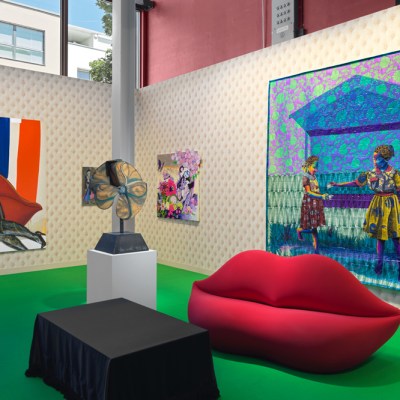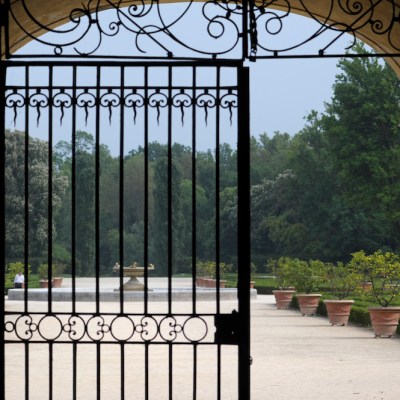At the height of summer, art fairs are probably the last thing on anyone’s mind. It is one of the great mercies of the season. But this sense of relief raises a question about art fairs. If everyone is happier being on an island in the Mediterranean with an occasional trip to an art foundation then why does anyone attend them?
Art fairs are a slightly odd phenomenon. Art is best considered in a state of quiet contemplation; piling as much art as possible into a confined space with as many people as possible is no one’s idea of a good time. But for those of us who consider ourselves part of the art world, fairs dictate what we look at and when we look at it. For convenience, there is very little to rival an art fair. If you are time-poor and want to look at a lot of art quickly, the shape and scale of these events begin to make sense. If you add in the narratives that the fairs tell about themselves and the way dealers respond to them, the pulling power of these gatherings is even clearer. In the same way that luxury brands have crafted stories about the allure of their clothes and accessories that rest on gilded histories and a glint of exclusivity, some fairs have been able to position themselves as elite or exciting or some other adjective that identifies their role in the minds of their visitors. Galleries have responded by holding back certain works for certain events, and so the fairs have taken on an identity that, if not profound, is at least compelling. It’s enough to get someone to travel to a small-ish city north of the Jura in June.
EXPO Chicago, acquired by Frieze in 2023, offers an explanation as to why fairs are still worth visiting. It depends, of course, on what you are looking for, but here is a fair that is so rooted in the local art scene that the sense of discovering something new seems possible. The independent fairs have always had to rely on local support a little more heavily than the fair groups as they don’t have the marketing clout. It means that everyone in the cities feels more involved in the fair and the sense of inclusion and excitement can be greater.
Beer Garden with Ulrike and Celeste (2009) by Nicole Eisenman, on display at EXPO Chicago. Courtesy Hall Collection
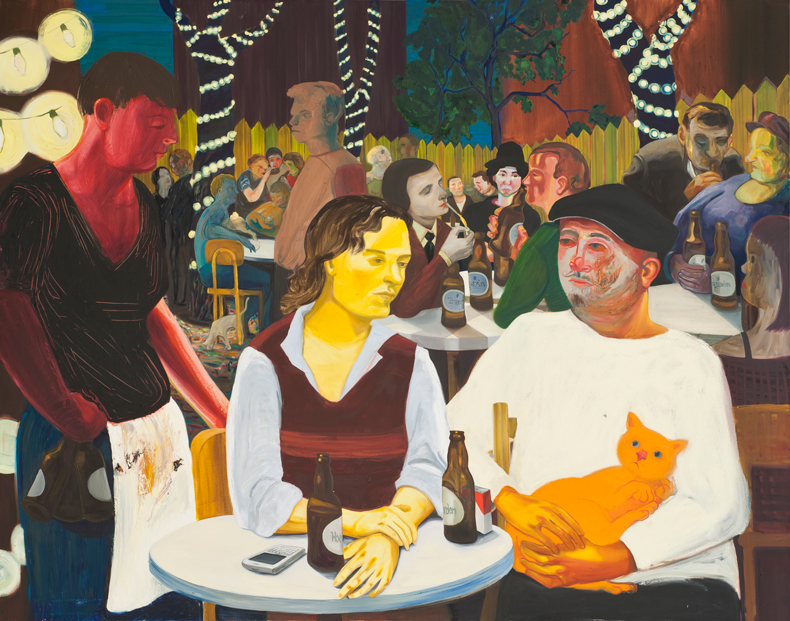
Upon first entering the enormous hall on Navy Pier where EXPO Chicago is held, it seems a little surprising not to be greeted by the big guns of the gallery world – Gagosian, David Zwirner or Hauser & Wirth – but it also feels refreshing. The collectors are not quite the international jet set seen at every fair the year round. Presumably, EXPO Chicago might hope for more of this sort of clientele now that it is part of the Frieze family, but to want to transform into Frieze Chicago feels like it would be a mistake. The delight of this fair is finding a gallery such as Montague Contemporary, which this year was showing works by the Kenyan painter Elias Mung’ora (b. 1992). These wonderfully observed paintings of domestic interiors, peopled with friends and family and layered up with old transfers, made visible the layers of history in the lives of the people he depicted. The founder of Montague Contemporary, Montague Hermann, had even brought a rug that appeared in one of the pictures from his own apartment to appear on the stand, as though it were an extension of the painting. Perhaps it also showed how personally important the artist was to the gallerist.
My Sister and My Mum Getting Ready for the School Term (2024), Elias Mung’ora. Courtesy Montague Contemporary
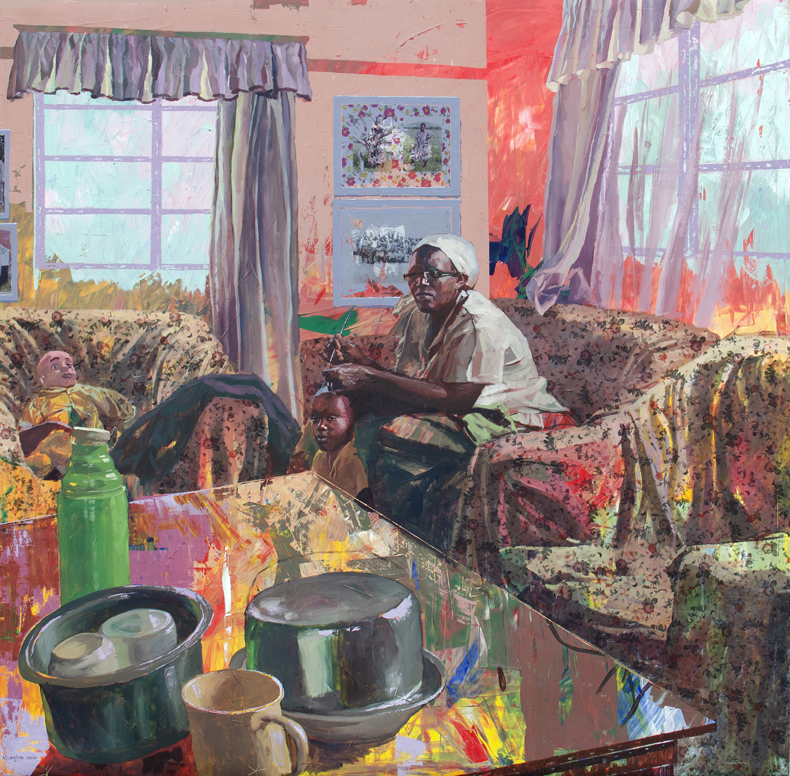
Moosey offered a different reading of the local gallery concept at EXPO Chicago. Though it has two spaces in London, Moosey billed itself as a gallery from Norwich, the city that had captured the heart of founder Frazer Bailey when he was based in nearby Marham with the Royal Air Force. There was a pleasing symbiosis going on: granted space by a fair that prides itself on its local roots, Bailey had not brought a Norwich artist to Chicago but was offering a platform to the Chicago-based artist Sean Gannon (b. 1993), whose witty paintings, which play with material and image (paintings of rope that turn into strands of actual rope hanging from the frame, for example), chimed well with the local crowd.
Dori (2017) by Lucia Koch, on display on a city billboard as part of EXPO Chicago. Courtesy the artist and Nara Roesler, São Paulo, Rio de Janeiro and New York
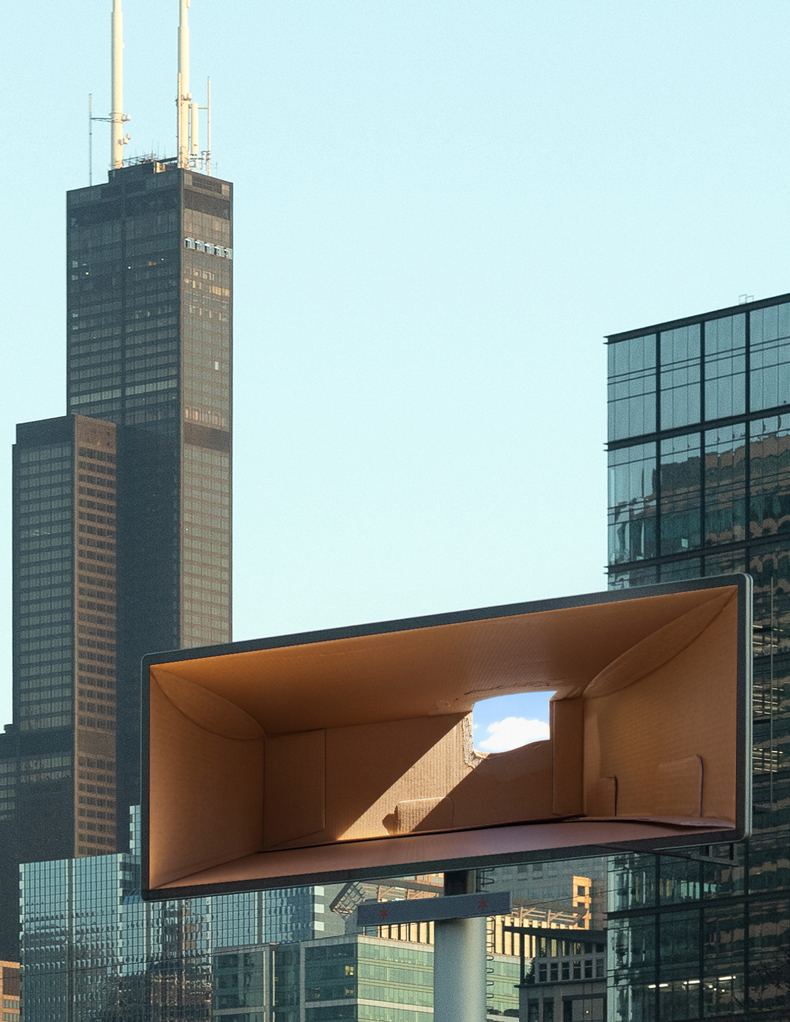
On the other side of the world a similar attitude suggests why art fairs are still relevant. This spring, Art Dubai, in its 17th edition, felt more coherent and grown up than some previous editions. The fruits of its partnership with Dubai Collection – a UAE-backed art collection that takes the form of a digital museum, which aims to bring art to the public – were on physical display in the Encounters section of the fair, which featured works by artists ranging from Mohamed Ahmed Ibrahim (b. 1962) to Sarah Al Mehairi (b. 1998), both from the United Arab Emirates. This lent a sense of maturity to Dubai Collection that also made tangible the way Art Dubai galvanised cultural energies in the city.
Installation view of Expand (2018) by Shaikha Al Mazrou and Book Cover I (2020) by Mohamed Ahmed Ibrahim at Art Dubai. Photo: Spark Media; courtesy Dubai Collection and Khaled & Hana Habbal Collection
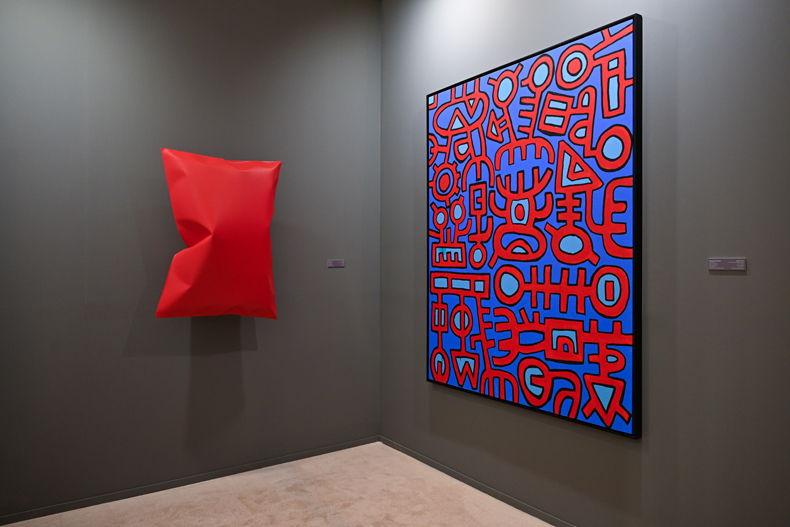
There were other signs of maturity on display. The fair has always looked to promote under-represented geographies. It made sense that the voices heard most clearly at Art Dubai were Palestinian, through artists such as Saher Nassar, Khaled Hourani and Manal Mahamid, at a time when Western institutions were grappling – and continue to grapple – with how to address the Israel-Gaza conflict. But there was room for geographical diversity in the Modern section of the fair too. One particularly exciting discovery was the work of the Ukrainian artist Fedir Tetianych (1942–2007). His paintings have a unique expressionistic sensibility that embodies his concerns about systems for shelter, energy storage and the movement of people. Despite the rather forbidding philosophical underpinning they are strangely beautiful.
And perhaps that is the point. While everyone is looking to art fairs to find the undiscovered artist, maybe the smaller, more unusual fairs offer a new perspective and find a way of exploring local cultures that normally go overlooked. And in the exploration the visitor might just find a hidden pearl.


